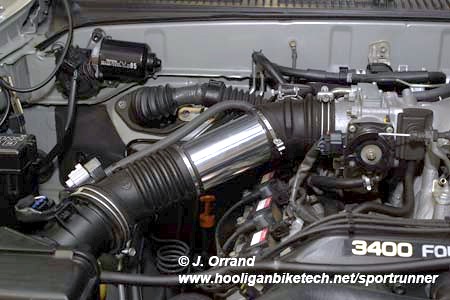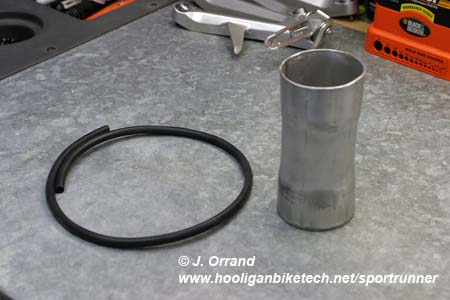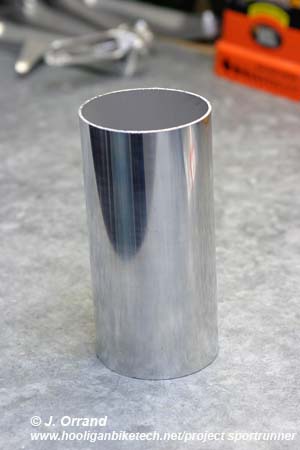
Intake Silencer Removal (ISR)
The intake silencer or muffler on the stock intake tube is designed to keep the intake noise to a minimum. The side effect of this is that throttle response is negatively affected. The air entering the intake must fill the volume of the intake silencer prior to making it's way to the throttle body, which causes throttle response to be hindered.

For this modification you'll need:
Phillips screw driver
Metal pipe 2 3/4" diameter 5 5/8" in length
2 feet of vacuum line
The vacuum line is just standard stuff you can get from any auto parts store. The metal pipe can be 2" exhaust tubing expanded to 2 3/4" at each end if you want to do this on the cheap. I initially used exhaust pipe to see how I liked this modification before getting something a little better. I just went to a local exhaust shop and they cut me a scrap piece of 2" exhaust pipe to 5 5/8" length, then expanded the ends to 2 3/4". Total cost was a $5 tip to the guy that did the work. When I got home I used a dremel and sanding wheel to smooth the cut edges and washed the pipe really well.

The install only takes about 10 minutes. All you do is remove the stock intake silencer between the air box and the throttle body. There are just two clamps holding it in place. Unplug the vacuum line running from the intake silencer to the metal tube running under the intake plenum. You won't be reusing this vacuum line.
|
|
|
Next, remove the vacuum plug from the port on the very back of the intake plenum. Connect 3 1/2" of vacuum line to this port on the back of the intake plenum, and run it to the unused metal tubing on the top of the intake plenum. Then remove the vacuum line connecting the fuel pressure regulator to the metal tube that runs under the intake plenum. This is the same metal line that the intake silencer vacuum line was connected to on the front side of the intake plenum and was disconnected earlier. Finally, connect 12" of vacuum line to the other end of the metal tube running across the top of the intake plenum and then to the fuel pressure regulator. Zip tie the ends of all the vacuum lines to their respective end points for good measure.
|
|
|
That's all there is to it. If you have this modification done as well as the deckplate, expect quite a bit more intake noise with moderate to heavy throttle application. I ended up liking the results of this modification, so I ordered a 2 3/4" diameter polished aluminum tube to replace the exhaust pipe I used initially. It's much lighter, will dissipate heat more quickly, and looks better. I ordered this in an 18" length from a performance shop and had them cut it down to 5 5/8".
